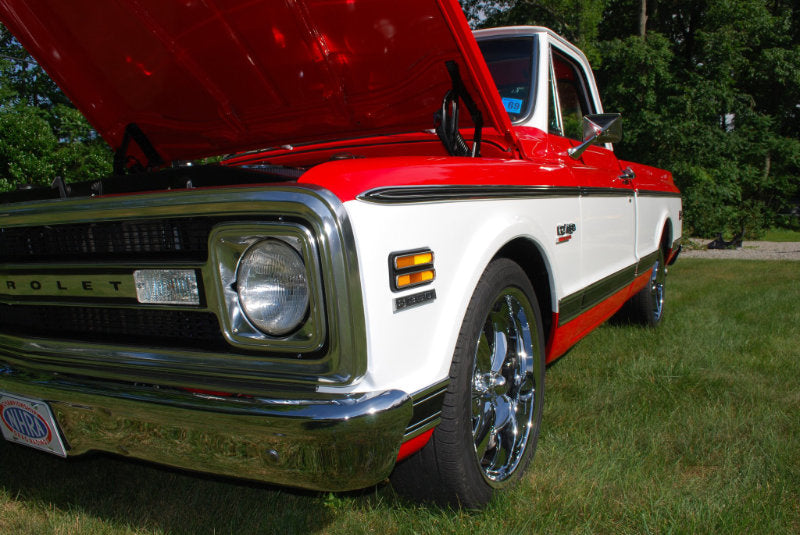Your Cart is Empty

October 09, 2025 3 min read
📺 Watch the full demo here:
My short video on flow coating just passed 46,900 views — and it’s no surprise. Most DIY painters and even some pros have never seen this trick in action. Flow coating is the difference between a decent finish and a show car gloss that looks a mile deep.
I first learned this process years ago in the body shop game, and it’s still one of my favorite finishing techniques. It’s simple, effective, and turns “good enough” into damn near perfect.
Flow coating is the process of:
Spraying multiple coats of clear.
Wet sanding the cured clear coat flat with 800–1000 grit.
Re-applying 1–2 coats of fresh clear.
This eliminates orange peel, knocks down texture, and lays down a final clear that looks like polished glass. It’s not just “more clear” — it’s a two-stage process that corrects and refines what’s already there.
Depth & Gloss: It creates that wet, mirror-like finish you see on top-tier builds.
Straightness: Knocks out all the waves and imperfections.
Less Buffing: Instead of hours of cutting and polishing, flow coat does most of the work.
Show Car Quality: Judges and buyers notice the difference immediately.
Lay Down Your Base Clear
3 coats of clear is typical. Let it fully cure (usually overnight or longer depending on system).
Sand It Flat
Wet sand with 800–1000 grit using a block. The goal is to level the peel, not to cut through.
Prep Thoroughly
Clean the panel completely. No residue, no dust, no shortcuts.
Spray Flow Coat
Apply 1–2 medium-wet coats of fresh clear. Let it lay out naturally — the surface is already flat.
Final Touch
Once cured, a light cut and buff (if needed) will take it to the next level.
Sanding too aggressive: If you break through, you’re back to base.
Not waiting long enough: First clear must cure properly or you’ll trap solvents.
Skipping prep: Any contamination shows up magnified under the flow coat.
Hammering it on too wet: Flow coat should lay smooth, not run.
These are the exact types of products I trust in the shop:
| Product | Use | Why It Works | Link |
|---|---|---|---|
| House of Kolor USC01 Show Clear | Clear Coat | Professional-grade, deep gloss, long open time | Buy on Amazon |
| Acme Finish 1 | Clear Coat | Affordable pro-grade option, excellent leveling | Buy on Amazon |
| 3M Hookit Wet Sanding Discs (800–1500 grit) | Sanding | Consistent cut, long-lasting | Buy on Amazon |
| Durablock Sanding Block Set | Blocking | Essential for leveling panels | Buy on Amazon |
| InoKraft Spray Gun (Budget-Friendly) | Spray Gun | Great for clear, solid atomization | Buy on Amazon |
| 3M Perfect It Buffing Kit | Buffing | Finishing system that complements flow coating | Buy on Amazon |
Flow coating isn’t some magic hack — it’s a professional process that separates a good paint job from a show-stopping finish. If you want depth, gloss, and a surface that looks wet even under harsh lights, this is how you get it.
👉 What’s your go-to method for achieving a glass-smooth finish? Drop a comment below — I’d love to hear how other restorers do it.
And don’t forget — if this helped, subscribe and check out my other how-to videos for real-world restoration tips.